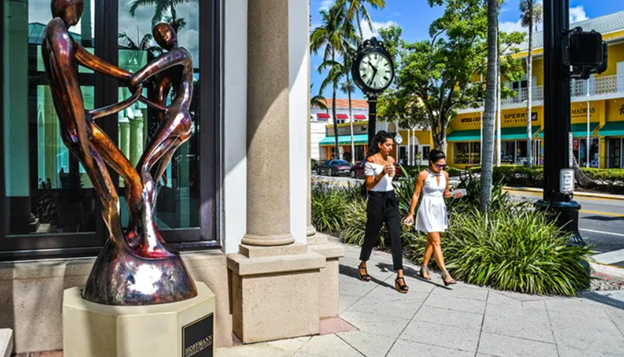Making your own adult videos means planning more than just what gets seen on camera. Simple choices, like using gentle lighting or keeping background sounds low, help make recordings more enjoyable to watch later. Many people run into trouble with harsh shadows, loud fans, or things in the shot that break the mood, so paying attention to these details can make a difference.
Filming amateur adult videos involves more than just a phone and some people who want to try it. Many encounter issues with bright lamps, harsh shadows, or voices echoing on the recording. Smooth results often come from using soft lights, turning off loud devices, and placing the camera carefully. Even small changes, like closing windows to block street noise, can help make the final video look and sound better.
Essential Equipment for Quality Amateur Adult Videos
Creating enjoyable adult videos depends on having the right tools. While professional equipment can be expensive, several affordable options work well for beginners. Modern smartphones offer impressive video capabilities that can be similar to entry-level cameras. They provide good resolution and are easy to use for intimate recordings.
Those aiming for smoother footage often get better results with simple lighting gear. A ring light provides consistent brightness across the scene, reducing harsh shadows and bringing out warmer skin tones. LED panels offer flexibility, letting users control brightness and direction so performers look natural on camera.
Audio quality matters just as much as video. Built-in microphones may capture unwanted background noise. External microphones, even inexpensive clip-on models, can help improve sound quality for intimate moments.
Shaky footage can reduce the impact of amateur recordings. Using a tripod helps keep static shots steady and free from distracting movement. For moments where movement is needed, a gimbal stabilizer can help prevent abrupt shakes, resulting in smoother panning.
Smartphone vs. Dedicated Camera Considerations
Modern smartphones offer impressive video capabilities that make them practical choices for amateur adult content. They provide automatic settings that adjust to different lighting conditions and allow immediate sharing with partners. Many recent models can shoot in high resolutions, capturing fine details.
Dedicated cameras give users more control than smartphones, especially in low-light settings where most intimacy happens. A larger sensor collects more light, so shadows appear softer and skin tones look natural with minimal lighting. Unlike smartphones that use digital zoom, dedicated cameras feature optical zoom lenses that help keep close-ups crisp.
Budget is an important factor when choosing equipment. Quality smartphones in the US are often in the mid to high price range and serve multiple purposes beyond filming. Entry-level dedicated cameras are typically less expensive than professional models. For beginners, using a good smartphone with added external lighting is often a cost-effective way to achieve good results.

Lighting Techniques for Flattering Adult Footage
Setting Up the Right Lighting Structure
Lighting shapes the look of every video, and a simple three-light technique can bring polish to intimate scenes. Place one main light at a 45-degree angle beside the subjects for balanced brightness. A gentler fill light set opposite the main one reduces shadows, while a subtle backlight placed behind the subjects helps them stand out from the background.
Making the Most of Natural Light
Natural daylight works well for amateur filming when indoor lighting looks too artificial. Position subjects near a window facing north or east for bright but diffuse sunlight. If outdoor glare is strong, drape thin white fabric over the glass to spread light evenly and avoid harsh shadows on skin.
Choosing the Best Color Temperature
Color temperature directly affects how natural and flattering skin appears on video. Warm lights rated between 2700 and 3000 Kelvin are often preferred for adult filming, as this range softens skin and creates a relaxing atmosphere. Those seeking this effect can select bulbs or LED panels marked as “warm white” on packaging.
Avoiding Common Lighting Pitfalls
Direct overhead lights throw shadows under brows and chins, which can make people look tired or harsh. Using just a single lamp often creates strong shadows and flattens the whole image. Always try different setups before a full shoot. Checking test videos helps spot unwanted shadows that distract from the main focus.
Creating Depth with Strategic Light Placement
Strategic backlighting separates subjects from backgrounds, adding visual dimension. Place a light behind subjects, aimed toward the camera but not directly into the lens. This creates a subtle glow around hair and shoulders, making the scene more visually appealing.
Side lighting highlights physical features through natural shadows that define muscle tone and body contours. Position lights at 45-90 degree angles to subjects rather than directly in front. This approach works particularly well for showcasing natural curves.
Avoid flat, clinical lighting that makes intimate moments look medical or harsh. Instead, create contrast between light and shadow areas while maintaining enough illumination to see important details.
Camera Angles and Framing for Adult Content
Finding flattering angles means knowing how camera position affects appearance. For many body types, shooting from slightly above eye level can create more appealing results than low angles. When filming intimate moments, avoid extreme close-ups that distort features.
Framing techniques help create stronger connection between performers. Include both faces in some shots to capture genuine reactions and emotions. Leave some space around subjects rather than cropping too tightly, which allows for natural movement during intimate moments.
Before filming, decide how the camera will move during scenes. A fixed tripod gives steady, polished results but sometimes creates a static look. Handheld filming introduces spontaneity but risks unsteady footage. Some professionals look to resources like the Seattle escorts directory at adultsearch.com for examples of verified profiles that use professional framing techniques.
Basic composition rules apply to adult content. The rule of thirds places important elements at intersection points of an imagined grid. Leading lines draw attention to specific areas. Planning your shots with these principles helps create more visually appealing results.
POV vs. Third-Person Perspective Techniques
Point-of-view (POV) recording creates an immersive experience for viewers. POV is achieved when a head-mounted camera is used or when a stabilized selfie stick is held during filming. Wide-angle lenses can deliver good results, capturing more of the scene and reducing the effect of sudden movement.
Third-person perspective offers more control over composition and lighting. This approach requires setting up the camera on a tripod or stable surface. It allows both participants to be fully visible and results in a more cinematic look.
Switching between perspectives adds variety to longer recordings. Plan transition points in advance, perhaps changing angles between different activities. Having multiple cameras running simultaneously can make editing between perspectives easier later.
Privacy and Consent Considerations in Amateur Recording
Clear communication about boundaries and approval should happen before filming begins. Discuss what will be recorded, how it will be stored, and who might see it. Both parties should explicitly agree to all aspects of the recording process and have the right to stop filming at any time.
Digital security helps protect intimate content from unauthorized access. Use devices with strong password protection and enable two-factor authentication on accounts used for storage. Consider keeping sensitive content on devices that never connect to the internet.
US law treats the making and sharing of explicit material with seriousness. All participants must be over 18. Written consent for filming and sharing provides clear evidence of agreement. Being aware of legal requirements helps ensure everyone’s protection.
Watermarking videos with a subtle logo or username can help identify unauthorized copies if content leaks onto public sites. Avoid displaying identifying features like tattoos or recognizable room decor, as these may trace content back to participants.
Secure Storage and Sharing Practices
Encrypted storage is important for keeping personal videos protected. External hard drives with built-in hardware encryption can keep files offline and away from online threats. Password-protected folders provide extra safety for those working on shared computers.
When sharing with trusted partners, use secure platforms designed for private content. Some relationship apps include encrypted photo and video sharing features. Avoid regular text messages or email, which may be backed up to unsecured cloud storage automatically.
Remove metadata from photos and videos before sharing, as this information can include locations and device details that compromise privacy. On Windows, right-click a file and use the ‘Remove Properties’ option. Mac users can use Preview to delete GPS or identifying fields.

